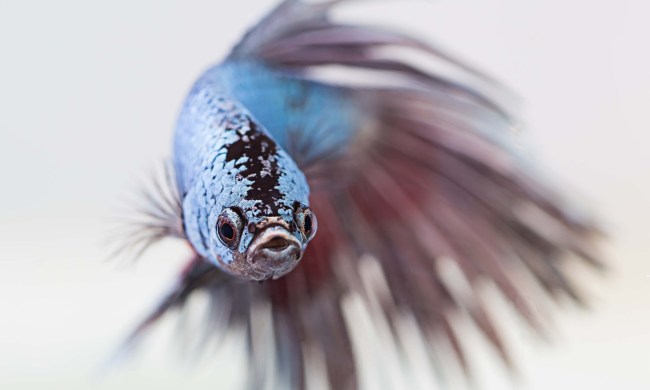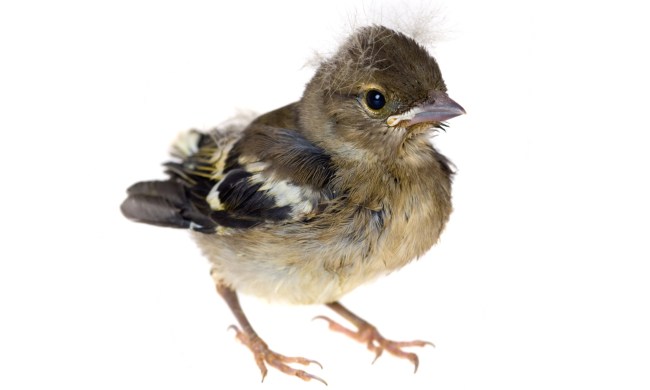Labrador retrievers have been the American Kennel Club’s (AKC's) most popular breed for 31 years. If you’ve ever met a Lab, you probably understand why. Their friendly temperament, up-for-anything attitude, and typical compatibility with young children and other pets make them a great fit for many households.
These playful pooches love running, jumping, and swimming, making them great exercise buddies, playmates, and vacation companions. Their trainability makes the breed a top one for guide dogs and search and rescue teams.
Unfortunately, the lovable Labrador retriever is also prone to some health problems, and not all are preventable. The good news: You can help your Labrador retriever live their best and happiest life by understanding common health issues and taking a few simple steps.

How long do Labrador retrievers usually live?
The AKC reports the average life span of a Labrador retriever is about 11 to 13 years. This life span is shorter than a Chihuahua’s (15 to 17 years) but longer than a Boxer’s (7 to 10 years).
That said, this average is an estimate. Some Labrador retrievers can live longer, others may, unfortunately, pass on sooner, and others will fall within the average. Pet parents can help their Labs live healthy and happy lives — however long that may be — by following a few basic lifestyle guidelines, being aware of Labrador retriever health conditions, and communicating with their vet. Most importantly, bonding and loving your Lab will help the two of you enjoy all the time you have together.

What are common Labrador retriever health problems?
Labradors are strong, skilled pups. However, they are prone to specific health problems — some of which may be similar to their human companions.
- Obesity
- Hip dysplasia
- Osteochondritis (a joint-related condition)
- Cancer
- Bloat
- Heart disease
- Diabetes
- Hypertension
Not all Labrador retrievers will develop these conditions, and some may get diagnosed with multiple. Your vet is the best person to discuss your individual pet’s health and risks with if you have concerns.

How can I help my Labrador retriever live longer?
First, go easy on yourself — genetics and breed play a factor in a Lab’s health. The same goes for humans. You can’t protect your best friend from every condition, but you can put them in the best position to succeed.
Step 1: Pick the best food.
Trendy diets like raw food, home-cooked meals, and vegan are all the rage. However, for most Labs, a standard, AAFCO-approved food is nutritionally complete and has everything they need to thrive. If you want to try a different diet, discuss it with your vet to ensure your pet gets all the nutrients they require.
Step 2: Control portions.
Serving size matters. A male Labrador should be between 60 and 80 pounds, while a female typically weighs 55 to 70 pounds. The back of your dog’s food label will have the correct portion per weight.
Step 3: Don't share your food with your pup.
Your Lab is your bestie, and it’s tempting to want to share your favorite foods. AAFCO-approved dog food should make up about 90% of their daily caloric intake, with treats making up the rest. Some foods like chocolate should never be served to a Labrador retriever (or any dog).
Step 4: Exercise your Lab frequently.
If you’re looking for a workout buddy, you’re in luck: The Lab is one of the better breeds to run alongside you. As a larger breed, they also require more exercise than most dogs — about an hour per day. Daily walks and hikes are great ways to help your dog get enough physical activity. Some of this exercise can also come from play sessions, trips to the dog park, and swims.
Step 5: Keep weight in check.
If your Lab is outside the standard weight for the breed, discuss ways to get it within normal range with your vet. Their guidance may include some of the above lifestyle tweaks, such as cutting down on table food and getting more exercise. Sometimes, it may require a specialized diet.
Step 6: Don’t forget checkups.
Speaking of vets, you’ll be seeing one frequently if you have a Lab. Vets typically ask Labrador retrievers to come in once or twice per year for a checkup. More visits may be needed if your Lab has a health condition, such as diabetes, that requires medication.
Step 7: Stay up to date on vaccinations and preventatives.
You can’t prevent every disease and condition, so control what you can. Keeping up to date with vaccinations and preventatives, such as monthly flea and heartworm medications, can reduce unnecessary illness and irritation.
Step 8: Perform basic grooming.
As a short-haired dog, your Labrador may never need to see a groomer. However, some basic maintenance will be required. Trimming nails, brushing fur, and daily teeth cleanings can keep your Lab looking and feeling their best.
Step 9: Clean the ears.
Labs love the water, but be sure to clean their ears after swim sessions or baths. If neither has happened for about a month, give their ears a clean any way to protect against infections and bacterial buildup.
Step 10: Consider pet insurance.
Pet insurance can help you afford any bills for health problems your pet develops, making it easier to keep them comfortable and healthy.
Labrador retrievers are lovable and popular dogs. They’re friendly, trainable, eager to please, and adaptable — it’s no wonder they’ve claimed the top spot on the AKC’s list of most popular breeds for more than three decades.
However, Labs are susceptible to various health conditions that can make them uncomfortable. Sometimes, they can be fatal. Early detection is critical, and where possible, prevention is the best medicine. A healthy diet, plenty of exercise, vet checkups, and basic grooming can help your Lab live their best and longest life. The most you can do is love and care for your Lab, and the two of you will make happy memories that last a lifetime.




